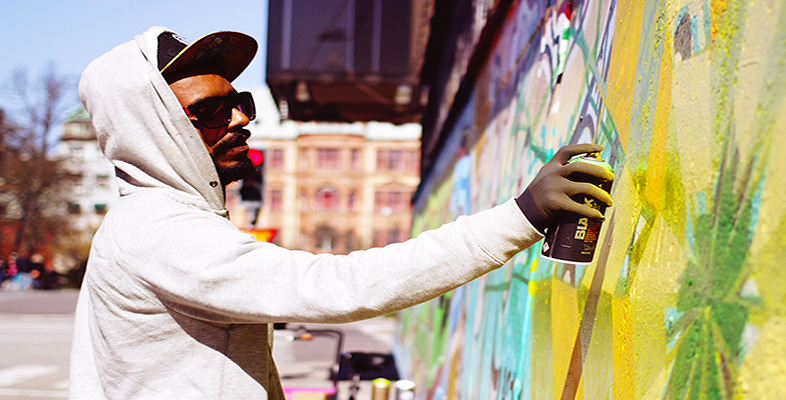Conclusion
In this course you have engaged with a range of debates around questions such as: Is graffiti a form of art or vandalism? Should it be penalised or celebrated? Who owns public space? Who owns graffiti in public spaces? Can graffiti only effectively articulate public protest when it is illegal?
You have looked at different arguments used in these debates and encountered a range of different types of evidence, including quotes by artists, activists, local residents, spokespeople for local councils and curators. You have worked with evidence published on the BBC News website, campaign websites, online petitions, blogs, newspapers, YouTube videos, surveys, academic journals, research reports, reference works and other literature discussing graffiti and street art.
This course has shown that the meanings and effects of graffiti can be very varied and are closely related to different techniques used and the contexts within which graffiti is presented and interpreted. The line between ‘art’ and ‘vandalism’ in interpretations of illicit graffiti can be very thin and very much depends on the background and point of view of the spectator and on the context within which it is displayed.
The formal display at prestigious venues such as Tate Modern gives the graffiti exhibits a great deal of official recognition as works of art. However, this formal, authorised, controlled setting stands in stark contrast to the thrill of the secrecy, subversiveness, risk, defiance, informality, freedom and mystery associated with the creation and display of unauthorised graffiti, like the ‘Mystery zebras’ in Hackney. It could be argued that these are important elements within the use of graffiti as an effective articulation of popular protest that might get lost when graffiti ‘goes official’. What do you think?
Reflective activity
Next time you come across an example of graffiti, for instance in your local neighbourhood or on a visit elsewhere, reflect on whether the study of this section might have affected your perception of this example of graffiti, and if so, how.
